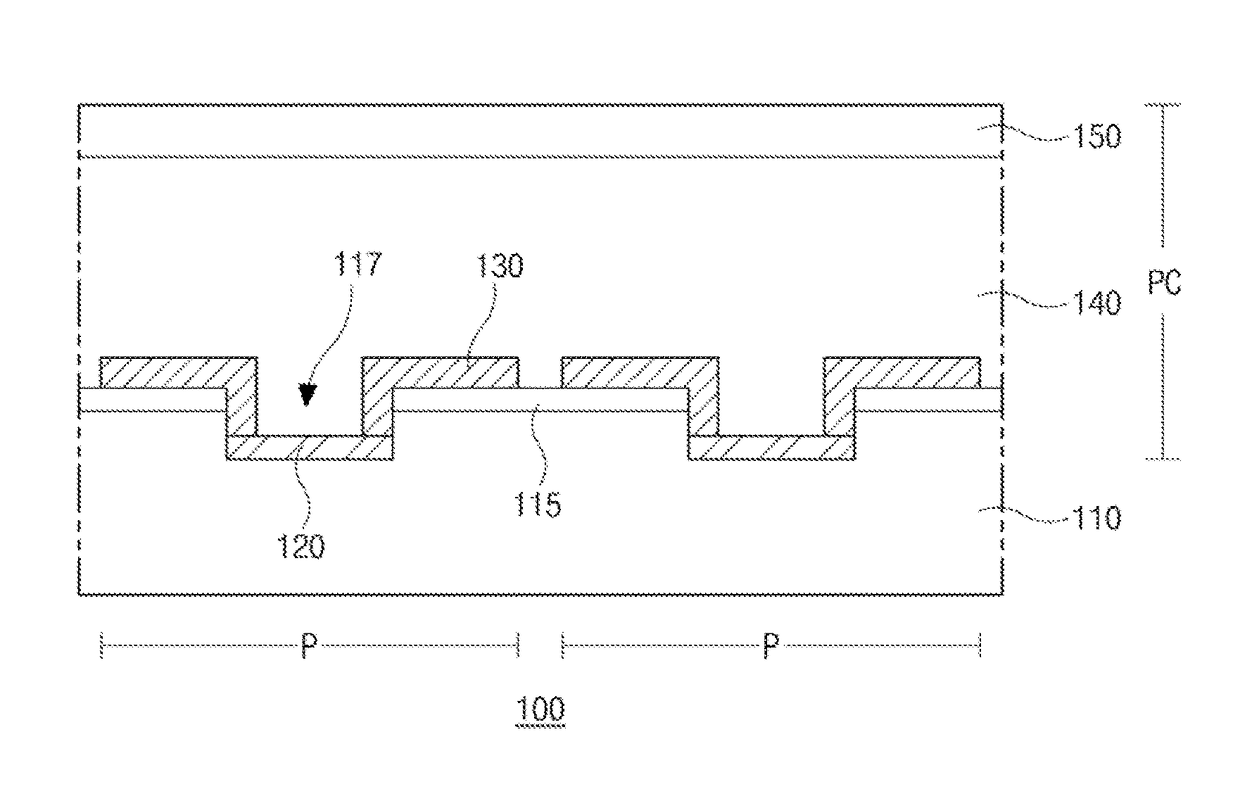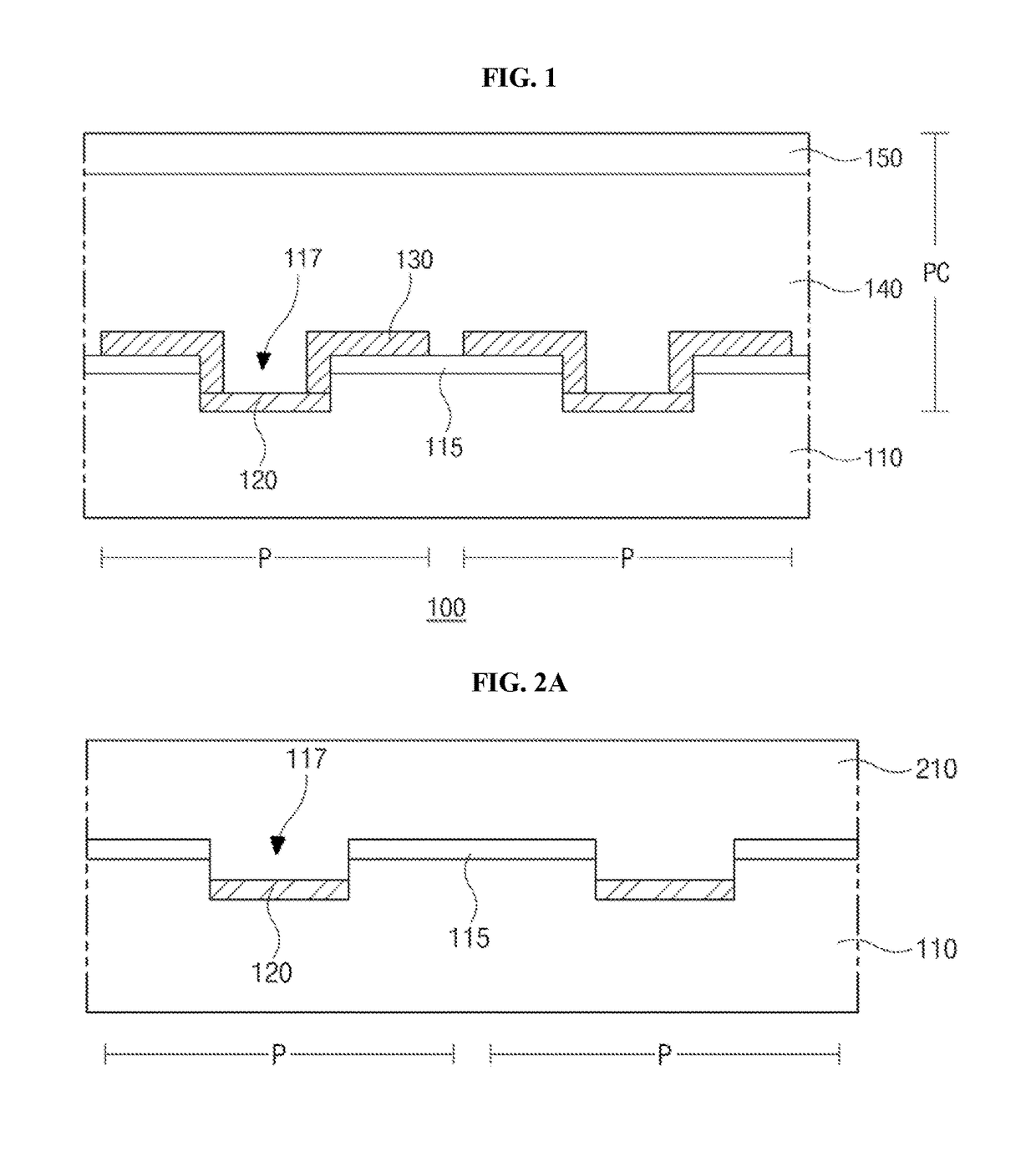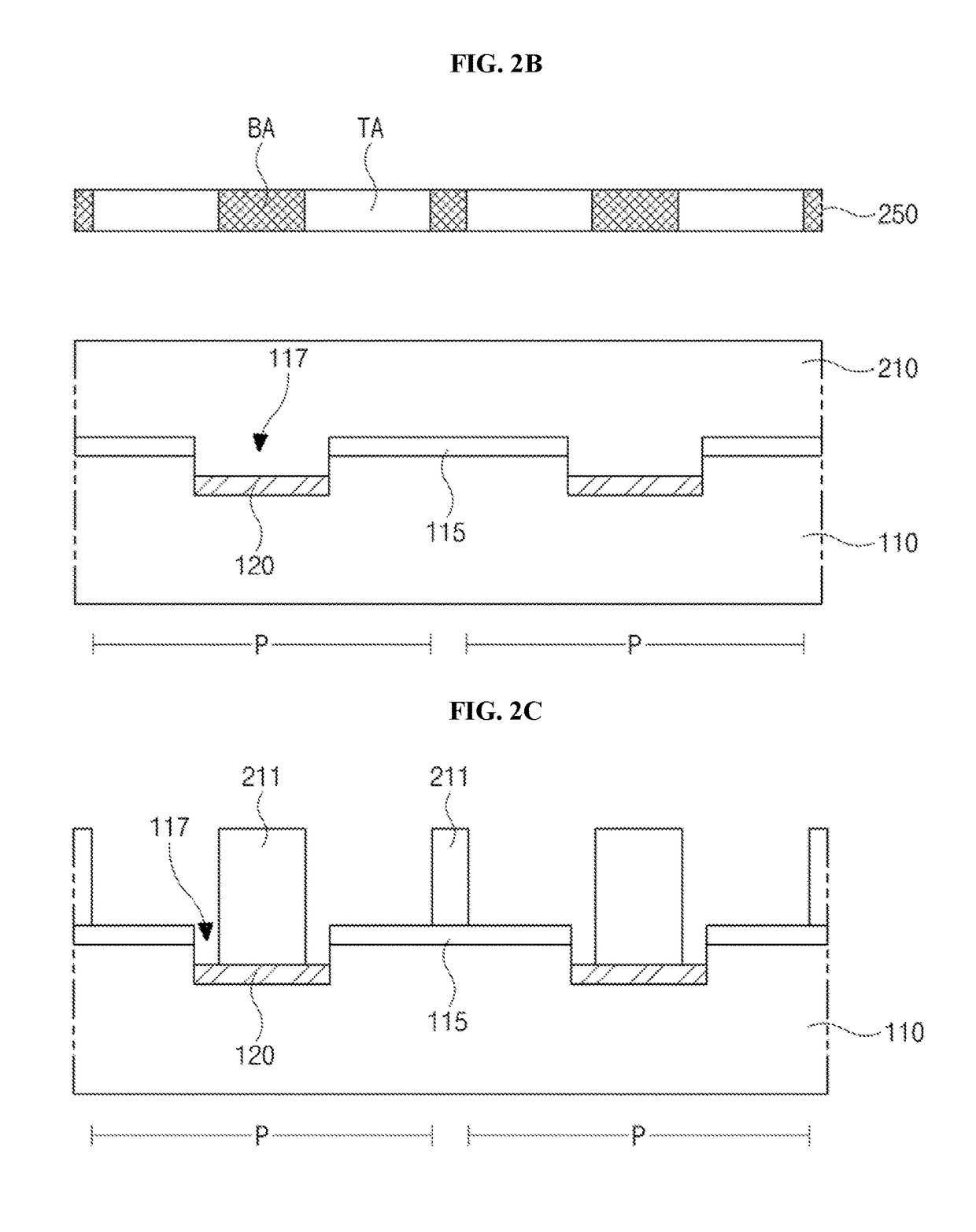Image sensor
a technology of image sensor and substrate, applied in the field of image sensor, can solve the problems of deteriorating reliability of image sensor, reducing the efficiency of charge collection, and inefficient use of resources and time, so as to avoid delamination or cracking of the photoconductive layer, reduce thermal stress between the photoconductive layer and the substrate, and reduce the effect of thermal stress
- Summary
- Abstract
- Description
- Claims
- Application Information
AI Technical Summary
Benefits of technology
Problems solved by technology
Method used
Image
Examples
Embodiment Construction
[0025]Hereinbelow, exemplary embodiments of the present invention will be described in detail with reference to the accompanying drawings.
[0026]FIG. 1 is a cross-sectional view schematically showing an image sensor according to an embodiment of the present invention.
[0027]An image sensor 100 according to an embodiment of the present invention may be used in a variety of X-ray imaging devices having various shapes or end uses. For example, the X-ray imaging devices may include mammographic devices, CT devices, etc.
[0028]The image sensor 100 corresponds to a configuration in which X-rays that have passed through a target are detected and then converted into an electrical signal. The image sensor 100 has a rectangular shape when viewed from above, but it is not limited thereto.
[0029]In particular, the image sensor 100 according to the embodiment of the present invention is a direct conversion-type X-ray detector, in which incident X-rays are directly converted into an electrical signal...
PUM
 Login to View More
Login to View More Abstract
Description
Claims
Application Information
 Login to View More
Login to View More - R&D
- Intellectual Property
- Life Sciences
- Materials
- Tech Scout
- Unparalleled Data Quality
- Higher Quality Content
- 60% Fewer Hallucinations
Browse by: Latest US Patents, China's latest patents, Technical Efficacy Thesaurus, Application Domain, Technology Topic, Popular Technical Reports.
© 2025 PatSnap. All rights reserved.Legal|Privacy policy|Modern Slavery Act Transparency Statement|Sitemap|About US| Contact US: help@patsnap.com



